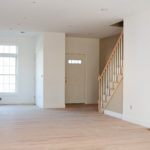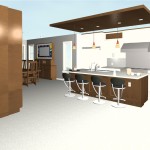Universal Design and the Aging Society
Wikipedia States: “ Universal Design ( a close relation to inclusive design) refers to broad-spectrum ideas meant to produce buildings, products and environments that are inherently accessible to older people, people without disabilities, and people with disabilities.

The term “universal design” was coined by the architect Ronald L. Mace to describe the concept of designing all products and the built environment to be aesthetic and usable to the greatest extent possible by everyone, regardless of their age, ability, or status in life.[1]
However, it was the work of Selwyn Goldsmith, author of Designing for the Disabled (1963), who really pioneered the concept of free access for people with disabilities. His most significant achievement was the creation of the dropped curb – now a standard feature of the built environment.
Universal design emerged from slightly earlier barrier-free concepts, the broader accessibility movement, and adaptive and assistive technology and also seeks to blend aesthetics into these core considerations. As life expectancy rises and modern medicine increases the survival rate of those with significant injuries, illnesses, and birth defects, there is a growing interest in universal design.
There are many industries in which universal design is having strong market penetration but there are many others in which it has not yet been adopted to any great extent. Universal design is also being applied to the design of technology, instruction, services, and other products and environments.

Curb cuts or sidewalk ramps, essential for people in wheelchairs but also used by all, are a common example. Color-contrast dishware with steep sides that assists those with visual or dexterity problems is another.
There are also cabinets with pull-out shelves, kitchen counters at several heights to accommodate different tasks and postures, and, amidst many of the world’s public transit systems, low-floor buses that “kneel” (bring their front end to ground level to eliminate gap) and/or are equipped with ramps rather than on-board lifts.”
Designing Spaces using Universal Design Principals
So… what has been done recently in the building and design world to bring this Universal Design concept to the average home whether it is a house, townhouse or apartment?
 As a veteran Interior Designer, I am seeing more homes incorporating this concept. In fact, I have recently designed two very different ‘user-friendly‘ homes. For one owner, is in his late 60’s, I designed 2 elevators; plus several ADA compliant areas in the home by using side ramp into the main house, wider hallways and doorways with lever handles on the doors. I also designed a transitional/accessibility vanity (where the cabinet was 34″ high and could be pulled out to accommodate a wheel chair) I also created a transition free 7′ shower in the Master ensuite.
As a veteran Interior Designer, I am seeing more homes incorporating this concept. In fact, I have recently designed two very different ‘user-friendly‘ homes. For one owner, is in his late 60’s, I designed 2 elevators; plus several ADA compliant areas in the home by using side ramp into the main house, wider hallways and doorways with lever handles on the doors. I also designed a transitional/accessibility vanity (where the cabinet was 34″ high and could be pulled out to accommodate a wheel chair) I also created a transition free 7′ shower in the Master ensuite.
My other clients, in their late 30’s, had a keen awareness of wanting their home to be accessible to aging relatives. I designed their contemporary styled 2 story home with an open concept around a 3-floor access elevator, ADA compliant washroom on the main floor and a ground access ‘in-law‘ suite with ADA compliant bathroom, kitchen and bedroom areas with access to the main and upper floors.
As I too am aging, I am doing more and more research on this topic. However, I want to add another element = creating a Hotel or Resort feel to any home I design that has ‘designer looking’ products that are easy to understand and use; require low physical effort; spaces that have easy access to all areas of the home and are beautiful to behold and touch.
Join me on this journey and let’s see how we all can embrace this ‘re-Newed’ standard of living! If you want this info as I get it… Go to my Training Site and Subscribe to my ‘Aging Resort Style’ – Newsletter >> HERE
Aging ‘Resort Style‘ by Design,
Jan Addams
Designer, Author, Trainer
and fellow Baby Boomer
